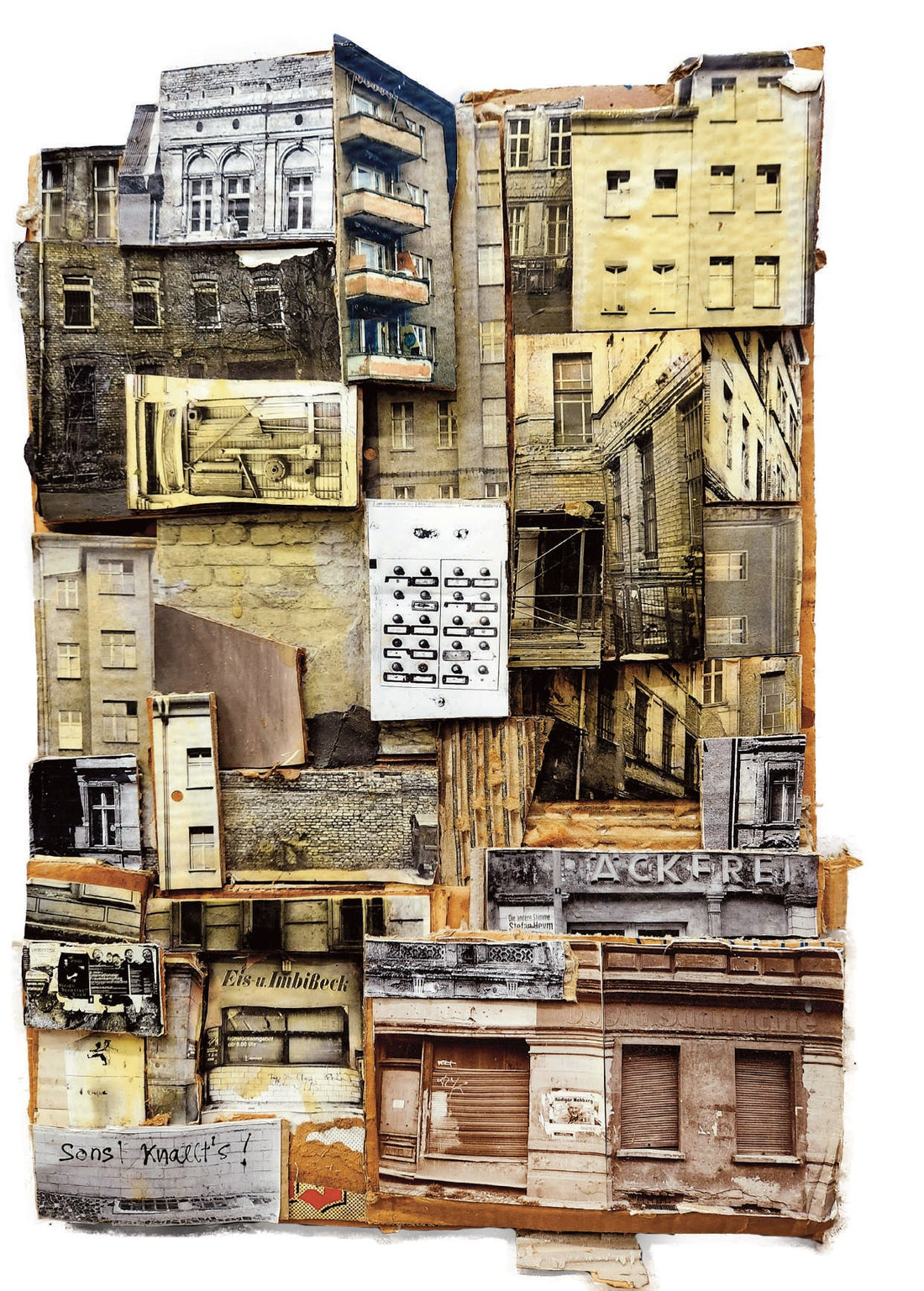First published: Spring 2024
Through photomontage, Tim Roeloffs tells the stories of his adopted city of Berlin and the famed Tacheles art squat in which he lived
“My mind is not made for computer thinking, me, I am totally analogue. I must be in total control of the whole process. This is why I neither drive a car or fly. I like to bicycle and take trains. I want to smell, hear and see my trip. I use only scissors, cutters and glue – this is my computer,” says Tim Roeloffs.

Untitled, 1994, 11.5 x 8.5 in. / 29.5 x 21 cm
all artwork shown: photographs, paper, cardboard and glue
The beliefs that the self-taught artist lives by have remained constant over the last 20 years. He was born Timotheus Paulus Roeloffs in Holland, in 1965. His family had lived on the same farm for hundreds of years but ended up working in textile factories for poor wages. His grandfather, who loved to drink beer and spend days in bars playing poker, won a printing machine, changing the family’s luck. It is an apt legacy, as part of Roeloffs’ art now involves making posters and silkscreens of his work.

Untitled, 2002, 19 x 28 in. / 48 x 78 cm
For ten years, Roeloffs lived and worked abroad – Spain, Portugal, Turkey, Egypt and Switzerland – teaching tennis, always photographing his environs. Then an illustrator friend convinced him to stop tennis coaching and to sell his photographs. Tired of teaching backhands in the hot sun for hours on end, Roeloffs was primed for change.

Untitled, 1997–1998, 59 x 20 in. / 150 x 50 cm
He often travelled to Berlin and other Eastern Bloc countries during the Cold War period from 1983 to 1989, and was inspired by the “Stalinist Disney World” he had experienced. When the wall fell in 1989, he visited Berlin again and was excited by the way art seemed to be happening everywhere. By 1992, he had moved there, exploring photography techniques – using his bath as a darkroom – and visiting the illegal underground bars in former East Berlin. This is how he heard of an art house squat called Tacheles (Yiddish for “straight talking”) in a building that had been a 1900s department store, taken over and used by the Nazis, and then partially demolished by the GDR. It was occupied by people from all over the world. Open round the clock, with art studios, a sculpture garden, movie theatre, bar and concert venue, Tacheles was famous as a tourist attraction and a symbol of postreunification and Berlin’s heady underground culture.

Untitled, 2002, 24 x 33 in. / 61 x 84 cm
“Tacheles was a very interesting social experiment. The inhabitants carried the ideals and lessons from this space in their hearts and minds. Tacheles was an initiator for the whole art scene in Berlin. Artists came and went. It was a microcosm of the creative world, a playground and a lifestyle experiment,” says Roeloffs.
By JEFFREY WOLF
This is an article extract; read the full article in Raw Vision #118.




